
Bonhoeffer, Faith and Resistance
What we must know about Bonhoeffer and political resistance:
The German Lutheran pastor and theologian Dietrich Bonhoeffer (1906-1945) did not just theorise about politics and resistance to evil regimes: he became actively involved in this and ended up paying the ultimate price for such actions. Given that he had been committed to nonviolence, his willingness to engage with others in seeking the death of Hitler demonstrates his even greater commitment to justice and protection of the innocent.
As the evils of Hitler and the Nazis grew ever more apparent, and the decimation of the Jews increased, Bonhoeffer knew he had to take a stand. He did not just seek to wake up morally comatose Christian leaders – he knew he had to be willing to ‘throw a spoke in the wheel’ of this great evil. He had to become personally involved.
As he famously put it, “We are not to simply bandage the wounds of victims beneath the wheels of injustice, we are to drive a spoke into the wheel itself.” If doing this meant living with contradictions and paradox, then so be it. His belief in nonviolence was matched by his belief in acting against evil and acting as Christ for the world.
Timeline
February 4, 1906 – Born in Breslau
1924-1930 – Theological studies
1928 – Becomes assistant pastor of congregation in Barcelona, Spain
1929 – Lectures in systematic theology at Berlin University
October 1933 – Takes a pastorate in London
1935 – Returns to Germany
1935 – The Finkenwalde Seminary for the Confessing Church is established
August 1937 – Himmler bans the training of Confessing Church pastors and shuts down the Seminary
March-July 1939 – In London and New York
1941 – He is forbidden to print or to publish
1941 – Meets Barth and Visser’t Hooft in Switzerland
December 1942 – “After Ten Years: A Reckoning Made at New Years 1943” is penned
January 1943 – Engaged to Maria von Wedemeyer
April 5, 1943 – Arrested and imprisoned
April 9, 1945 – Hanged at Flossenburg in Bavaria, aged 39
So much has been written on Bonhoeffer and his resistance – both in theory and in practice. I can only be selective here. The letter Bonhoeffer wrote late in 1942 (see above) is a good place to begin. In it he shows us that he had been moving in new directions in his thought. It was not enough to sit on the sidelines and condemn evil.
Personal involvement was necessary. In his brief letter he speaks of “the astonishing inability of most people to take any kind of preventive action – one always believes that he can evade danger, until it is too late.” (Barnett, p. 27) He continues:
We have been silent witnesses of evil deeds. We have become cunning and learned in the arts of obfuscation and equivocal speech. Experience has rendered us suspicious of human beings, and often we have failed to speak to them a true and open word. Unbearable conflicts have worn us down or even made us cynical. Are we still of any use? We will not need geniuses, cynics, people who have contempt for others, or cunning tacticians, but simple, uncomplicated, and honest human beings. Will our inner strength to resist what has been forced on us have remained strong enough, and our honesty with ourselves blunt enough, to find our way back to simplicity and honesty? (Barnett, p. 30)
Marsh puts it this way:
What had become of Bonhoeffer’s theology of nonviolence? . . . . He prayed for the defeat of his country and the assassination of the Fuhrer, and in praying with the conspirators, he conferred God’s blessings on tyrannicide. Bishop Bell would recall that when he first heard Bonhoeffer refer to Hitler as the Antichrist, the remark was followed by an even more incendiary one: “We must therefore go on with our work and eliminate him whether he is successful or not.” The answer is complicated, pragmatic…
Bonhoeffer moved within an inescapable paradox; he gave his blessings to those who conspired to murder the Fuhrer while affirming the essential nonviolence of the gospel. Responsible action meant killing the madman, even though such action violated God’s commandment not to kill. How could it be otherwise? In the face of Hitlers atrocities, the way of nonviolence would bring inevitable guilt—both for the “uncontested” injustices and for the innocent lives that might have been saved. To act responsibly in these circumstances meant killing the madman if one could. (p. 345)


A decade before he was saying such things, it is clear that he felt that some form of resistance had a role to play in the life of the Christian. Renata Wind says this about a lecture he had given back in 1933 to a group of Berlin pastors:
Most of the people sitting there were certainly not encouraged by the way in which the state was exercising its office. But they were good Lutherans, and so Dietrich first moved on tiptoe through the theme of church and state. The church has no right to appropriate to itself power over the state. But it may not keep out of politics if the state abrogates basic human rights. In this instance Dietrich mentioned three possibilities of church action towards the state: “In the first place it can ask the state whether its actions are legitimate and in accordance with its character as state, i.e., it can throw the state on its responsibilities. Secondly, it can aid the victims of state action. The church has an unconditional obligation to the victims of any ordering of society, even if they do not belong to the Christian community (!). The third possibility is not just to bandage the victims under the wheel, but to put a spoke in the wheel itself.”
Dietrich gave the rest of his lecture to an almost empty room. His demand that the church must be prepared for political resistance had flabbergasted most of the audience. With this attitude, Dietrich remained alone in his church. The only ones who would have agreed with him, the Religious Socialists, were themselves already among the persecuted. (p. 69)
A friend and student of Bonhoeffer, Eberhard Bethge, who was arrested in 1944 and spent several months in prison, lived to tell about the life and work of Bonhoeffer. In an address given in 1984 he said this about the decisions they had to make:
Bonhoeffer introduced us in 1935 to the problem of what we today call political resistance. The levels of confession and of resistance could no longer be kept neatly apart. The escalating persecution of the Jews generated an increasingly intolerable situation, especially for Bonhoeffer himself. We now realized that mere confession, no matter how courageous, inescapably meant complicity with the murderers, even though there would always be new acts of refusing to be co-opted and even though we could preach “Christ alone” Sunday after Sunday. During the whole time the Nazi state never considered it necessary to prohibit such preaching. Why should it?
Thus we were approaching the borderline between confession and resistance; and if we did not cross this border, our confession was going to be no better than cooperation with the criminals. And so it became clear where the problem lay for the Confessing Church: we were resisting by way of confession, but we were not confessing by way of resistance.
Once the border is crossed into political resistance, however, the variety and especially the ambiguity of activities to be engaged in becomes obvious. Bonhoeffer too needed time before he became involved in the conspiracy which has become known under the date of July 20, 1944 [the date of the third and final attempt to assassinate Hitler. The two previous attempts had occurred in March 1943 (leading to Bonhoeffer’s arrest)]. Others took even longer to reach and cross the border; and most never crossed it at all. (1995, pp. 24-25, 29)
In another volume Bethge looks at the development of his thought in this regard. As he puts it at the end of his brief 1976 biography:
The theological theme, ‘Who is Christ for is today?’ and the Christological answer ‘Jesus, the man for others’ are expressed in three different forms in Bonhoeffer’s life. A new form appears at each point when the old form can no longer cope with new historical challenges.
First of all, it was the cause of peace against nationalistic militarism; then, the fight against anti-Semitic racism, finally, the ‘being below’ of the Church. Each stage meant he had to question his church’s way of existence anew; finding answer became each time more precarious. Each new step was unpopular and threatening – as it still is today.
The part Bonhoeffer played in the struggle for peace made him, a follower of Christ, an ally of the few pacifists, who were then very unpopular.
His resistance to Nazi racism – which could no longer be countered by a pacifist sermon on peace, because a sermon could not prevent complicity in murder – turned the preacher of peace into an ally of conspirators plotting to rid their country of the murderers.” (p. 114)
One final word. While the actual involvement of Bonhoeffer in the resistance movement was actually somewhat limited and peripheral (and all up over 100 plots to overthrow Hitler were undertaken by various Germans), he and others did not just have in mind stopping Hitler. They looked beyond Nazi Germany to what might lie ahead. As Teitz reminds us:
Bonhoeffer also wrestled personally with the question of German reconstruction after the war ended, particularly with respect to what the church’s role might be. Like many of those in the political resistance he set his hopes not on a democracy, given the experience of the Weimar Republic, but on a strong government that would reflect the God-given duties of the state: “No form of the state is as such an absolute guarantee of a proper performance of the office of government. Only concrete obedience to the divine task justifies a form of the state. . . . The relatively best form of the state will be that in which it is most clear that government is from above, from God, and in which its divine origin shines through most brightly” Bonhoeffer drafted a church announcement to be read after the successful coup; it spoke of guilt, repentance, and personal confession, of forgiveness and renewal.
In 1942 Bonhoeffer became involved with the Freiburg circle, a group of experts from various fields who were drafting suggestions for the restructuring of different German institutions and organizations after the war; this became known as the Freiburg memorandum. He made various suggestions but was not involved in actually drafting it. On September 8, 1944, Constantin von Dietze, one of the leaders of the circle, was arrested and charged with preparing for the coup through his plans for the reorganization of Germany; Bonhoeffer was cited in the indictment of von Dietze as having initiated the memorandum.” (p. 83)
In sum, the idea of resistance to tyrannical despotism was certainly not just theoretical for Bonhoeffer. He had to discern how his Christian faith – and its key emphases – could be lived out in very practical, realistic – as well as very risky and dangerous – ways in such a situation.
While our political and cultural scene is different today, there is so much we can learn from the man and his thought – as well as from his actions.
For further reading
Barnett, Victoria, ed., “After Ten Years”: Dietrich Bonhoeffer and Our Times. Fortress Press, 2017.
Bethge, Eberhard, Dietrich Bonhoeffer: A Biography. Fortress Press, 2000.
Bethge, Eberhard, Bonhoeffer: An Illustrated Biography. Fount, 1976, 1979.
Bethge, Eberhard, Friendship and Resistance: Essays on Dietrich Bonhoeffer. Eerdmans, 1995.
Busch, Eberhard, The Barmen Theses Then and Now. Eerdmans, 2010.
DeJonge, Michael, Bonhoeffer on Resistance: The Word Against the Wheel. Oxford University Press, 2018.
Dramm, Sabine, Dietrich Bonhoeffer: An Introduction to His Thought. Hendrickson, 2007.
Dramm, Sabine, Dietrich Bonhoeffer and the Resistance. Fortress Press, 2009.
Gill, Anton, An Honourable Defeat: A History of German Resistance to Hitler, 1933-1945. Henry Holt, 1994.
Hale, Lori and W. David Hall, eds., Dietrich Bonhoeffer, Theology, and Political Resistance. Lexington Books, 2020.
Marsh, Charles, Strange Glory: A Life of Dietrich Bonhoeffer. Knopf, 2014.
Metaxas, Eric, Bonhoeffer: Pastor, Martyr, Prophet, Spy. Thomas Nelson, 2010.
Rasmussen, Larry, Dietrich Bonhoeffer: Reality and Resistance. Westminster John Knox Press, 1972, 2005.
Slane, Craig, Bonhoeffer As Martyr. Brazos Press, 2004.
Stroud, Dean, ed., Preaching in Hitler’s Shadow: Sermons of Resistance in the Third Reich. Eerdmans, 2013.
Tietz, Christiane, Theologian of Resistance: The Life and Thought of Dietrich Bonhoeffer. Fortress Press, 2016.
Wind, Renate, Dietrich Bonhoeffer: A Spoke in the Wheel. Eerdmans, 1990, 1992.
Zimmermann, Wolf-Dieter and Ronald Gregor Smith, eds., I Knew Dietrich Bonhoeffer. Collins, 1964.
Of these 18 volumes, the Metaxas book is well known. Marsh is also very good indeed. And given his personal association with Bonhoeffer, any of the works by Bethge are of great value.
[2156 words]
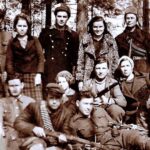

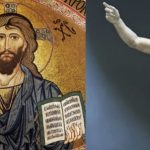

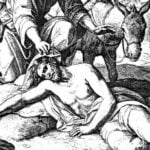




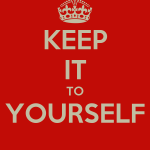

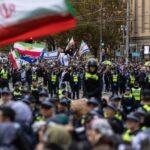

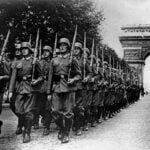


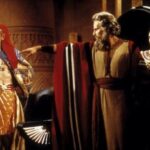
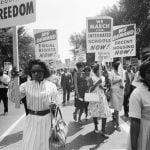
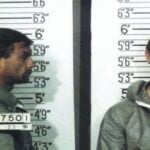

Dietrich Bonhoeffer is one of my all-time favourite Christian heroes.
What courage he showed in the 1930s after Hitler came to power and when so many of his one-time Lutheran colleagues chose to censor their utterances and abandon Christianity just so they could enjoy a quiet life.
In what a short period of time a society can slip from civilisation to barbarism — and not just Germany between the wars.
I’m thinking particularly of Australia today.
As of May last year, all states have legalised euthanasia — or, as it is more politely called, “assisted” dying. (It would be more truthful to call it “doctor-assisted killing”.)
Your call for Christians to remember Pastor Bonhoeffer’s heroism is particularly well timed as pro-life Victorians prepare for this Saturday’s annual March for the Babies in Melbourne.
Let us never forget how, fifteen years ago, Victoria’s parliament legalised the killing of the unborn up until birth, with its Abortion Law Reform Act 2008.
Here is what Bonhoeffer said about abortion:
“Destruction of the embryo in the mother’s womb is a violation of the right to live which God has bestowed upon this nascent life. To raise the question whether we are here concerned already with a human being or not is merely to confuse the issue. The simple fact is that God certainly intended to create a human being and that this nascent human being has been deliberately deprived of his life. And that is nothing but murder.”
[Source: Dietrich Bonhoeffer Works, ed. Clifford J. Green, English trans. (New York: Augsburg Fortress, 2008) Vol. 6: Ethics, p. 206].
Thanks so much John.
Having had an uncle serve in the Second World War, and having been born in 1944 myself, I take a keen interest in the leading Christian figures during that arduous period of human history. If Dietrich Bonhoffer were Catholic, he would have been a saint by now- what an inspiring and courageous example of Christian witness he was. As usual, Bill, this is a gripping and articulate recall of an iconic figure of Christian history and I thank you for it.
The whole Bonhoeffer affair is a constant challenge to me. Knowing when to act and when not to, when to turn the other cheek and trust God, and when to take action, both for myself and /or injustices done to others.
Nonetheless, I suppose book of James gives us some practical advice on the whole “faith without deeds is dead faith”, (I realize that is in a different context) but, specially when it comes to our leaders, corrupt laws and injustices.
I read on epoch times that the AEC will accept two votes per person in the upcoming referendum Can you comment please
Thanks Sandra. A bit off topic, but the piece is here: https://www.theepochtimes.com/article/multiple-voting-at-australias-referendum-under-scrutiny-5504319
If it is accurate then it is a real worry indeed.